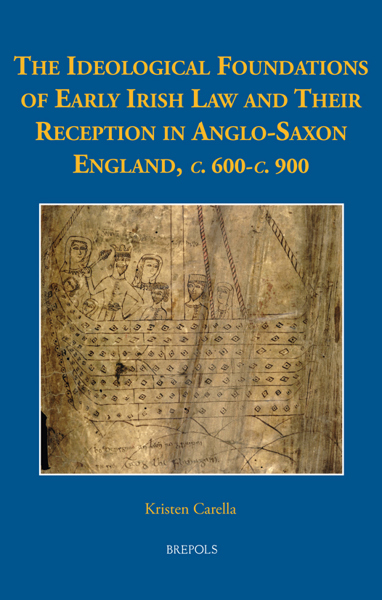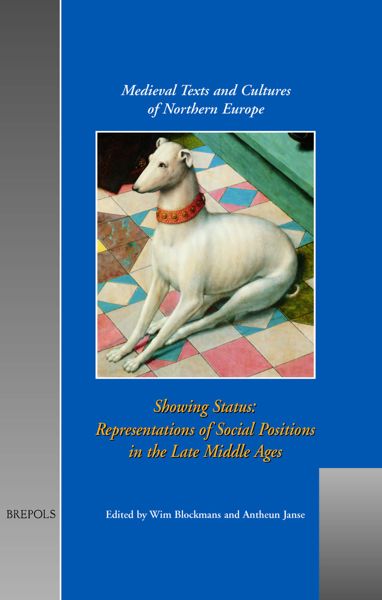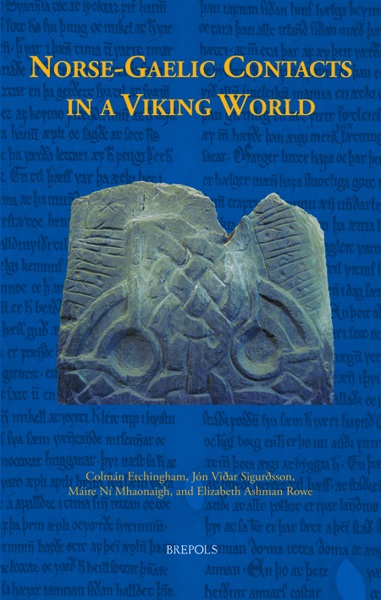
Showing Status
Representation of Social Positions in the Late Middle Ages
Wim Blockmans, Antheun Janse (eds)
- Pages: 492 p.
- Size:165 x 245 mm
- Language(s):English
- Publication Year:1999
- € 45,00 EXCL. VAT RETAIL PRICE
- ISBN: 978-2-503-50766-8
- Hardback
- Available
- € 45,00 EXCL. VAT RETAIL PRICE
- ISBN: 978-2-503-54167-9
- E-book
- Available
This publication brings together multi-disciplinary perspectives on representations of social difference in the Low Countries during a time of dynamic social change.
How did people in the late medieval period perceive and express social status? This volume brings together multi-disciplinary perspectives on representations of social difference in the Low Countries during a time of dynamic social change. The premise of the volume is that medieval social change may only be fully understood if hierarchies of wealth and power are examined alongside literary and artistic sources. Medieval texts and material culture expressed social standing and gave meaning to the experience of social change. The aim of the study is to recognise and translate the language of symbols used to encode and display status in the late Middle Ages.
Preface
Wim Blockmans, The Feeling of Being Oneself
Part 1: Positioning by milieu
Raymond van Uytven, Showing off One's Rank in the Middle Ages; Danielle Quéruel, Attitudes and Social Positioning in Courtly Romances: Hainault, Fourteenth and Fifteenth Centuries; Robert Stein, Gifts of Mourning-Cloth at the Brabantine Court in the Fifteenth Century; Wim Blockmans and Esther Donckers, Self-Representation of Court and City in Flanders and Brabant in the Fifteenth and Early Sixteenth Centuries; Antheun Janse, Marriage and Noble Lifestyle in Holland in the Late Middle Ages; Jeanne Verbij-Schillings, On the Nature of True Nobility. Views from Dutch Courtiers in the Early Fifteenth Century; Hilde de Ridder-Symons, Rich Men, Poor Men: Social Stratification at the University (13th-16th Centuries); Fred J.W. van Kan, Around Saint George: Integration and Precedence during the Meetings of the Civic Militia of The Hague; Koen Goudriaan, Ownership of Graves in Medieval Parish Churches in Holland
Part 2: Visions and problems
Annelies van Gijsen, Love and Marriage. Fictional Perspectives; Wim Blockmans and Tess Neijzen, Functions of Fiction. Fighting Spouses around 1500; Hans-Joachim Raupp, Visual Comments of the Mutability of Social Positions and Values in Netherlandish and German Art of the Fifteenth and Sixteenth Centuries; Jos Koldeweij, The Wearing of Significant Badges, Religious and Secular: The Social Meaning of a Behavioural Pattern; Hanneke de Bruin, Treacherously Significant Woodcarving: Woodcuts in Dutch-Language (Post-)Incunabula as a Source for Socio-Historical Research
Part 3: Positioning by Social Function
Geert Warnar, Jan van Ruusbroec and the Social Position of Late Medieval Mysticism; Maximiliaan P.J. Martens, The Position of the Artist in the Fifteenth Century: Salaries and Social Mobility; Johann-Christian Klamt, Artist and Patron: The Self-Portrait of Adam Kraft in the Sacrament-House of St. Lorenz in Nuremberg; Peter Hoppenbrouwers, Rebels with a Cause: The Peasant Movements of Northern Holland in the Later Middle Ages; Wim Blockmans, To Appear or to Be; The Authors




